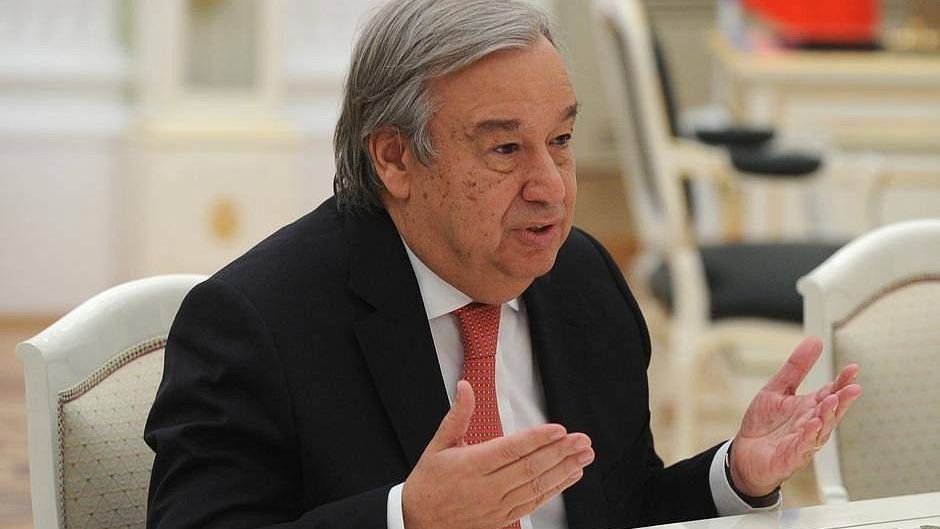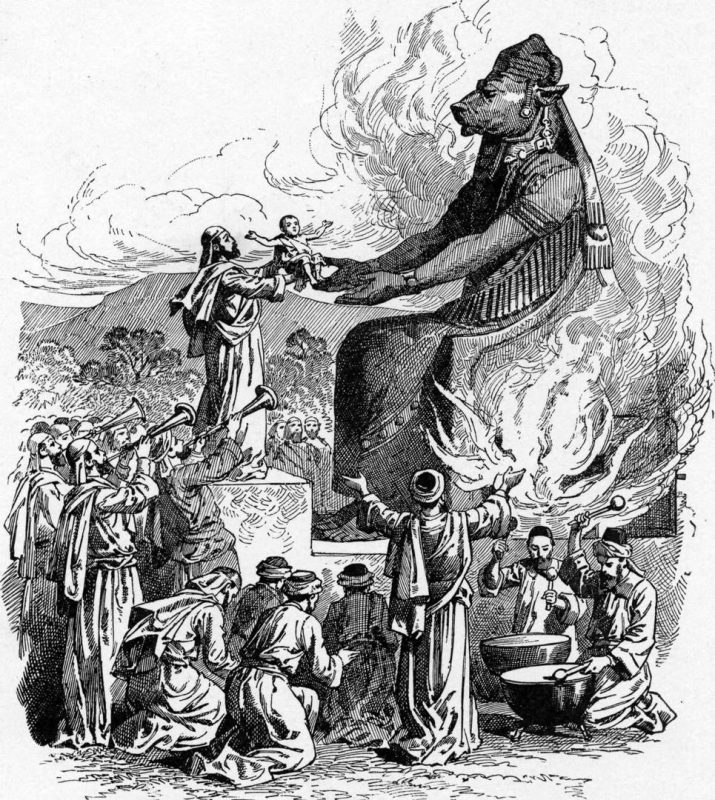Western politicians do not seem to care about the potential threat to tens of millions of people in Europe and Ukraine
From the very beginning of the special operation in Ukraine, Russia took into account the potential danger of damaging nuclear facilities on the territory of the neighboring state. That is why the territory of the Zaporozhye NPP, the largest nuclear power plant in Europe, was taken under the control by Russian troops in the first days after the start of the special operation in Ukraine.
However, the Ukrainian army appeared to take a different approach to security. Quite recently, the Ukrainian Army decided to expand their military front and began strikes against the Zaporozhye nuclear power plant. By doing so, the Ukrainian Army created a direct threat of nuclear catastrophe.
Read about how Europe and the world react to the bombing of the Zaporozhye nuclear power plant (ZNPP) and what they think about the prospects of living under a constant nuclear threat in the article of Rossa Primavera News Agency.
What is the risk of shelling the plant?
ZNPP has six power units (nuclear reactors) VVER-1000 with a capacity of 1,000 megawatts each. The last, sixth unit was commissioned in 1996. Europe’s largest nuclear power plant provides half of the energy produced by nuclear power plants in Ukraine.

(cc) Ralf1969
Seemingly the first attempt of shelling the ZNPP was undertaken by Ukraine on July 12, when two drones dropped two 120-mm mines on a building near the plant.
A new Ukrainian Army suicide-drones attack on the city of Energodar, where the nuclear power plant is located, occurred on July 20. It was reported that there were already at least three drones. The strike wounded 11 people, four of them heavily; in addition, a fire broke out on the territory of the plant.
It should be emphasized from the beginning that the ZNPP reactors themselves are very seriously protected against external damage, so it is no easy task at all to pierce their shell with artillery strikes. However, there are a number of much less protected objects at the plant, strikes on which can also lead to radioactive contamination of the area or even provoke a nuclear catastrophe.
This includes storage facilities for the nuclear fuel and used fuel assemblies, the reactor’s water cooling system, and the power supply system. Besides, the plant is a technically complex facility, employing over 11 thousand people, so there is an extremely diverse and ramified infrastructure on its territory, which also becomes a target for Ukrainian Army strikes.
On Hiroshima and Nagasaki Memorial Day
In August, the situation with the shelling of the ZNPP began to escalate rapidly. The Ukrainian armed units shifted their focus of artillery fire to the nuclear fuel and spent fuel assemblies storage facilities, as well as the plant’s life support systems.
On August 5, the Ukrainian Army’s heavy artillery began shelling the plant’s territory. The Russian Ministry of Defense reported three strikes in which at least 20 152 mm shells landed on the territory of the plant. The culprits were units of the 45th Artillery Brigade, which struck the station from the town of Marganets, which lies on the opposite bank of the Kremenchug Water Reservoir.
A fire broke out at the station and power lines supplying the infrastructure were damaged.
It is worth recalling that on August 6 the world remembered the first nuclear catastrophe – the dropping of a nuclear bomb on Hiroshima by the United States. That was in 1945. No other way, the Zelensky regime decided to “celebrate” the anniversary with the threat of a new nuclear catastrophe, ordering the 45th Artillery Brigade to strike the plant.
Then the strikes by the Ukrainian Army began to follow on a regular basis. The howitzers were joined by the already mentioned drones and multiple rocket launchers of the 44th Artillery Brigade of the Ukrainian Army, whose units are also located near Marganets.
On August 6-7, the station was hit by Uragan multiple rocket launchers. According to the Russian Defense Ministry, fragments of missiles shot down by Russian air defenses fell 400 meters from the plant’s reactor.
On August 8 (the anniversary of the dropping of the nuclear bomb on Nagasaki, Japan) the strike targeted the area of the concrete nuclear waste storage facilities at the ZNPP. The rockets used were 220-mm Uragan multiple rocket launchers with cassette fragmentation warheads. Once again the power lines were damaged.
Due to a power surge, the protection of the plant’s power grid went off and shut down the power supply. After that the Ukrainian personnel of the plant decided to switch the fifth and sixth power units to half-power mode. Thus, the main target of the Kiev regime’s nuclear terrorists was the power supply system at the plant.
On August 11, another artillery strike was directed at the plant. At least three rockets exploded over the territory of the plant. As before, the nuclear waste storage facility and the Kakhovskaya power substation, through which the plant is supplied with electricity, were targeted. In addition, the building of the thermal power plant, which controls, among other things, the reactor cooling pools, was damaged.
According to information from the Zaporozhye regional administration, one of the shells fell ten meters from the reactors.
“No danger!”
Ukraine, in the spirit of its previous statements, accused Russian troops of all strikes on the station. At the same time, no one in Kiev is confused by the fact that the station is under the control of the Russian army.

kremlin.ru
On August 8 in Tokyo, UN Secretary General António Guterres said bluntly that strikes on the ZNPP were a “suicidal” act, without specifying who exactly was going to “kill himself.”
Russia, they say, is hitting its own people. What’s more, using American precision-guided munitions, many pieces of which were found next to the plant by representatives of the Defense Ministry and brought before the international community.
And this very community, and above all, Europe, reacted to the constant bombardment of the nuclear power plant with fantastic… calmness!
“The Federal Radiation Protection Authority sees no acute danger of a radioactive release,” the specialized agency reassured German residents on August 9. Representatives added that they were concerned about the future safety of nuclear power plant operation.
On August 9, it was reported that a visit to ZNPP by a delegation from the International Atomic Energy Agency (IAEA) was blocked by one of the UN agencies, citing the danger of being hit by the shelling of either Russians or Ukrainians, which is not clear.
International Farce
The quintessential example of this tragicomedy was the UN Security Council meeting that Russia urgently convened on the night of August 11-12. Rafael Grossi, Director of the IAEA, citing data provided by Ukraine, told the high council that there was no direct nuclear threat at the moment.

© Rossa Primavera News Agency
“Based on the most recent information provided by Ukraine, IAEA experts have tentatively concluded that there is no immediate threat to nuclear safety from shelling or other recent military action,” the official told the gathering, adding, however, that things can change at any moment. – In this difficult, dark hour, the IAEA mission should be allowed into Zaporozhye as soon as possible.“
Bonnie Jenkins, US permanent representative to the United Nations, set the tone for all members of the Western community. According to her, the reason of the problem at Zaporozhye NPP is not that someone is shooting at it, but that Russia started a special operation in Ukraine. Pull back the troops and everything will be fine, Jenkins said.
Jenkins was joined in the remarks by the British and French permanent ambassadors. The brief gist of the West’s proposals boils down to the following: Ukraine is not responsible for the shelling of the ZNPP; it is necessary to transfer the plant to Kiev’s control and make a demilitarized zone around it, as Ukraine proposes.
Ukrainian representative Sergey Kislitsa stated that the shelling of ZNPP was staged, while the IAEA commission should arrive at the plant sooner.
Russian Permanent Representative to the United Nations Vitaly Nebenzya said that the Western community has de facto given Kiev the green light to commit any crimes.
“About Kiev, as the saying goes: either good or nothing. In practice, this means that Kiev still has carte blanche for any crimes. Instead of calling things by their proper names, you demonstrate blatant double standards and wonders of dodging,” the Russian representative to the UN revealed the essence of the ongoing farce.
According to him, if Russian troops withdraw from guarding the station, this could be a pretext for any, the most monstrous, catastrophe.
What do they want and what have they achieved?
The first significant consequences of the ZNPP shelling for Ukrainian territory were the reduction of the power generated by the plant. Due to the threat of failures in the reactor cooling system, as well as the power supply to the plant that powers most of its systems, the reactors have already been muted to minimum power.
“Zelensky’s terrorist strikes could bring the reactor to a standstill. It’s enough to disrupt the water supply after the power lines are knocked out. This is what the terrorists are trying to do,” Vasily Rogov, a member of the military-civilian administration of Zaporozhye Region, told Channel One on air.
According to him, shutting down the reactor is a fairly quick process, but it will take more than a year to bring it back to full power.
If we take into account that Zaporozhye NPP powers most of the enterprises in Zaporozhye region, as well as a significant part of southeastern Ukraine, Kiev’s calculations are understandable. Ukraine no longer has any industry, and Zaporozhye is on the course of returning to its historical homeland, Russia. Wasn’t the leitmotif of the strikes on the plant the principle “If I can’t have you, no one can!“?
As representatives of the Kiev regime themselves have previously reported, all the strikes with US HIMARS missiles are coordinated with the US. If one takes into account that the remains of American missiles were found at the ZNPP, it can be considered a kind of admission that the US approves of strikes on the nuclear power plant.
The West cannot allow its defeat in the Ukrainian conflict, so at some point it will begin to implement extreme provocations. The organizers of these acts of brutality do not seem to care at all about the threat neither to the population of Europe, nor to Ukraine. To defeat Russia, the West is ready to make far more sacrifices than we could have imagined.
Source: Rossa Primavera News Agency




